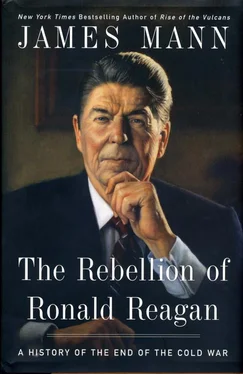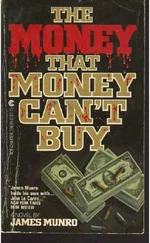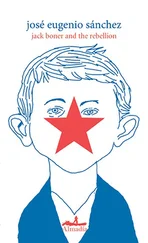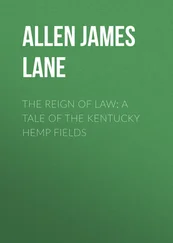Suddenly, Reagan switched the subject to religion. He told Gorbachev that what he was about to say would be considered entirely secret. According to the notetakers, Reagan told Gorbachev that “if word got out that this was even being discussed, the President would deny he had said anything about it.” To emphasize this point, Reagan said again a few minutes later that “if there was anyone in the room who said he had given such advice [to Gorbachev about religion], he would say that person was lying, that he had never said it.” 6
In planning for the Moscow summit, Reagan had discussed with his aides the idea of focusing on freedom of religion. He had worked with aides on some talking points to use with the Soviet leader; he had honed these ideas during his stay in Helsinki. 7Once he was alone with Gorbachev, the president began with a plea on behalf of religious tolerance in the Soviet Union. He praised Gorbachev for easing slightly the rules for the Russian Orthodox Church. According to the notes of the meeting: “The President asked Gorbachev what if he ruled that religious freedom was part of the people’s rights, that people of any religion—whether Islam with its mosque, the Jewish faith, Protestants or the Ukrainian Church—could go to the church of their choice.”
Gorbachev deflected this question. He insisted that religion was not a serious problem in the Soviet Union. According to the notes, Gorbachev told Reagan that “he, himself, had been baptized, but he was not now a believer, and that reflected a certain evolution of Soviet society.” There might have been some “excesses” in repressing religion immediately after the Soviet revolution, Gorbachev said, but times had changed. His program of perestroika was designed to expand democratic procedures, and it would extend to religion.
Reagan then ventured further, taking a step that quite a few Americans would have found objectionable. The president switched from seeking to persuade Gorbachev of the value of religious tolerance to promoting a belief in God. Reagan did so by telling one of his trademark stories. According to the notes of their meeting:
The President said he had a letter from the widow of a young World War II soldier. He was lying in a shell hole at midnight, awaiting an order to attack. He had never been a believer, because he had been told God did not exist. But as he looked up at the stars he voiced a prayer hoping that, if he died in battle, God would accept him. That piece of paper was found on the body of a young Russian soldier who was killed in that battle. 8
Gorbachev tried to switch the subject. Perhaps the United States and the Soviet Union might open the way for greater cooperation in space, he told the president. But the president wasn’t to be diverted. According to the transcript, Reagan told Gorbachev that space was in the direction of heaven, but not as close to heaven as some other things that they had been discussing.
As the meeting ended, Reagan became even more direct and personal. He noted that his own son Ron did not believe in God either. “The President concluded that there was one thing he had long yearned to do for his atheist son. He wanted to serve his son the perfect gourmet dinner, to have him enjoy the meal, and then to ask him if he believed there was a cook.”
Of the two American notetakers who were present for this extraordinary conversation, one took Reagan’s effort at face value. “Reagan thought he could convert Gorbachev, or make him see the light,” said Rudolf Perina, who was then the director of Soviet affairs on the National Security Council. The second, Thomas Simons, the deputy assistant secretary of state, viewed Reagan’s promotion of religion as, in part, a tactic to deflect Gorbachev away from discussion of other substantive issues. 9
Reagan’s proselytizing was extremely unusual for an American president, but not entirely unprecedented. Nine years earlier, Reagan’s predecessor Jimmy Carter had stunned his aides when he asked the South Korean dictator Park Chung Hee about his religious beliefs and then told Park, “I would like you to know about Christ.” 10Religion had been a continuing theme underpinning Reagan’s views of the Soviet Union. He had observed the impact of the Catholic Church in Poland, he had talked with Suzanne Massie about an upsurge in religious sentiment in the Soviet Union, he had speculated to Colin Powell that Gorbachev might be secretly devout. The secret one-on-one conversation in Moscow reflected Reagan’s continuing belief that the Soviet system’s repression of religion left it vulnerable to ideological challenge. It embodied his hope that Gorbachev was capable of changing the system.
The Reagans were determined to engage in some sort of seemingly spontaneous event with ordinary people on the streets of Moscow, comparable to Gorbachev’s stroll along Connecticut Avenue in Washington. White House planners had recommended a walk in the shopping area known as the Arbat. The Secret Service objected to the risks, but the Reagans decided to go forward. They took a limo to the Arbat and shook hands with crowds of Russians for about ten minutes. When photographers complained that it was hard to get a good picture, Nancy Reagan found an old carriage and stood with her husband on it, framing the photo that they knew would be on newspaper front pages the next day. On the edges of the event, some KGB officials shoved away a couple of American onlookers, but the event was on the whole a success and served the purpose of showing that Reagan could do in Moscow what Gorbachev had done in Washington. “In my mind, the score with Gorbachev had been evened,” wrote Jim Kuhn, Reagan’s executive assistant.
The dispute over Reagan’s walk in the Arbat exemplified the intense security that surrounded him throughout the stay in Moscow. The Reagans were staying at Spaso House, the residence attached to the U.S. embassy. The president was informed that the rooms might have bugs or cameras in them, and that any time he wanted to study a briefing paper or talk to an aide, he should move to a secure room in the building. Reagan balked, saying he wanted to be able to read his material in relaxed fashion without these cumbersome procedures. The issue was brought to Powell, who decreed that Reagan didn’t have to go to the secure room for these routine preparations. 11
The demands of American security irked Gorbachev. When the president and his wife were scheduled to accompany the Gorbachevs to the Bolshoi Ballet one evening, the show had to be delayed because of logistical problems. “It was reported to Gorbachev that they [the U.S. Secret Service] wanted to check all spectators themselves,” recalled Gorbachev’s interpreter, Pavel Palazchenko. “This was one of the few occasions that I ever saw Mikhail Gorbachev angry.” Before eventually relenting, the Soviet leader talked with his aides about canceling an after-ballet dinner for the Reagans at his dacha. 12
Despite the obsession with security, Reagan was able to attend several carefully orchestrated events aimed at demonstrating interest in several aspects of Soviet life. He visited the Danilov Monastery, where he declared that Americans shared “a hope for a new age of religious freedom in the Soviet Union.” At a meeting with a group of Soviet writers and artists, Reagan voiced a hope that the works of exiled author Alexander Solzhenitsyn could be published inside the Soviet Union. He also reflected on his earlier career in film, saying that actors were often typecast and then added that “politics is a little like that, too.” In the most politically sensitive event on the president’s schedule, he met at Spaso House with nearly a hundred Soviet dissidents specially invited for the occasion. “You have the prayers and support of the American people, indeed of people throughout the world,” Reagan told them. He spoke of the values of freedom of speech, religion, and travel. “I’ve come to Moscow with this human rights agenda because, as I’ve suggested, it is our belief that this is a moment of hope,” he told the dissidents. “We hope that one freedom will lead to another and another.” 13
Читать дальше












